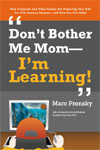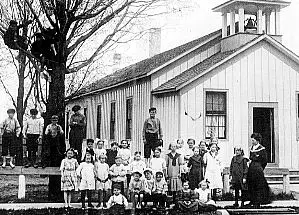POSITION: Mathematics Teacher
CONFERENCE ATTENDED: TRETC / Carnegie Science Center; Pittsburgh
PA
DATES: November 8 & 9, 2006
| RESUME: You kiss her goodbye, you tell her you love her, and say, "Have fun at Judy's house sweetie." Then you shut the door, and go on about your day. |
||
WRONG This happens every day, in every country, in every state, in every city, in every town, in every home, where there is a "digital native" living with a "digital immigrant" who doesn't speak the language. |
||
Neuroscience researchers have shown that these children's brains are wired differently than those of people born before them.
|
| Their brains do not think and solve problems in a linear fashion. They think in multidirectional patterns. They can follow several trails of thought at once and backtrack when a trail fails to pan out. Multitasking is not a special ability, it is the norm. Thinking linearly is abnormal for these brains. |
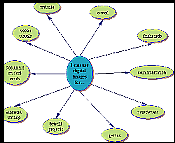 |
| Their brains have nursed and flourished on the nutrient of immediate reinforcement. As teachers, we know that immediate reinforcement is the holy grail to maximize learning. |
|
For centuries we have struggled to find ways to give kids that all needed one-on-one learning experience called immediate reinforcement. |
Well guys, the "holy grail" is available at Wal*Mart™ for less than the price of a TV. Almost everyone has it in their home, it's called the interactive web.
The interactive web, known
as Web
2.0 or the "Read/Write Web" has changed everything. We aren't static
in our use of computers today, they are social networking tools where
natives and immigrants exchange information, learn, play, and problem
solve with each other, even how they find their spouses.
 |
************************************************************
So back to Susie and Judy. Dad can keep Susie blocked from Judy, locked in the house, and Susie will never learn the proper way to navigate streets safely and read the signs of danger. Or dad can show Susie how to safely cross streets and look for danger signs. He can walk beside Susie to Judy's house and learn about his daughter's personality as they talk. Dad can build a relationship with his daughter while teaching her to safely matriculate in her world. |

The KEY is teach them to matriculate SAFELY.
As educators and parents we
are in a unique spot today. Our kids know more than we do about this computer
interactive world, their brains will always be more adapted to its use
than will ours, but they still do not have the wisdom to use it safely,
in most cases. They still need guidance; they need adults there with them
along the way. So we MUST learn to use these things that are their reality
and are NOT GOING TO GO AWAY.
The true beauty of learning this new culture is that the EDUCATIONAL benefits are tremendous.
- Do you want to actively engage every mind in your classroom, including your own, every minute of every class, every day?
- Do you want to give immediate reinforcement as the norm?
- Do you want to grow your students' creativity and productivity?
- Do you want to train true problem solvers with sophisticated abilities to attack a problem from multiple angles?
- Do you want your class to come alive?
- Do you want your kids to care about your subject matter?
- Do you want your students to learn more than you know about your topic and be able to share this information with everyone?
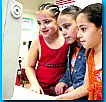

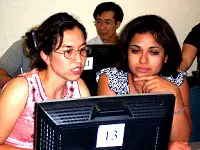

This is the way it is
gonna be for the schools and classes that tap into the "digital native"
environment and utilize it to the fullest.
POINTS TO PONDER:
1) Today your "Permanent Record" is truly permanent. Anything
you write on the Internet from Blog entries to email to your MySpace account
is publicly accessible. Not only that, but even after you "delete" information
that you no longer want out there, IT REMAINS through caching services
like Google cache. So we need to teach kids that they need to filter everything
that they publish on the Internet so that it puts forth the image that
they want to convey to future employers, college admissions officers,
even to future mates. Your Internet record will be a MUCH stronger
indicator of you than any typed resume you may submit.

Go
here to see how Google cache works and a bunch of other cool Google stuff
too!
Teachers are using this for all kinds of collaborative classroom activities. The prospect of having your name in lights for others to see and for others to judge tends to motivate students to put out quality stuff. It's one thing if only your teacher sees your work, but if the entire WORLD can view it, now THAT is powerful motivation to pay attention to detail. No one wants to look like an idiot. Those shy kids will flourish in this environment as will the class clowns, because a wiki provides an audience without the FEAR.

The site has a built in dictionary that can be called to run simultaneously with any page. When an unfamiliar word appears, the student can look it up immediately. You can highlight passages and the computer will read them aloud to you.
You can also highlight passages and the computer will TRANSLATE into several different languages for your ESL students. WOW! I was told that ARIN has the password for our school district to access this resource and that it is for parent use as well. Check out if your state has the same access.

8) SMARTBoards™
should be in every classroom that is serious about functioning in the
digital native environment. A SMART Board™, or at the very least
a computer hooked to a projector, is essential if you are going to teach
through demonstration.
9) When every student has their own laptop, and every teacher uses them as a given part of the school environment the school will truly be best servicing the digital natives.
The analogy has been proposed of taking every pencil, pen, or writing device in the school and storing them all in one room down at the end of the hall. Students are allowed to visit the room once or twice a week to use these learning tools. Imagine how much more powerful the tool becomes when it is available on demand. It is the same with computers.
Naturally school districts
balk at the mere suggestion, because of the cost involved. That is why
the $20,000,000
"Classrooms for the Future Program"
was established in the state of Pennsylvania with the goal of getting
laptops into the hands of all High School students in the state. Proposals
such as this are worldwide. Do some "googling" to find what
is availlable in your area.

10) I listened to the technology director of Fox Chapel School District, PGH PA, Norton Gusky, discuss at dinner a professional development plan that worked fabulously. They were introducing a new technology that had broad application across the curriculum. They needed to have 100% of their teachers on board and fluent to make it work; so this is what they did.
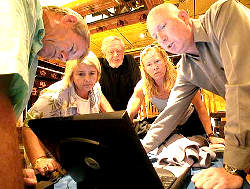
The teachers were scheduled in blocks, and all of the blocks took a class together each day, sort of like our 7th grade teaming right now. They learned the new technology in their daily class and their assignments were to incorporate what they learned the next day in their own classrooms. They were given ample time to assimilate and use the information, and they got to see results immediately with their students.
The collegial atmosphere of being in the class together broadened cross curriculum discussion for all of them, and it created much more of a team feeling throughout the school.
So even if everyone has a laptop, then what?
Get
teachers fluent like this...



